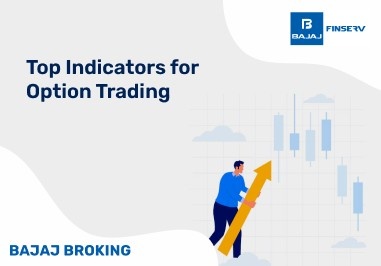BAJAJ BROKING
PDP Shipping & Projects IPO is Open!
Open a Free Demat Account
Trade Now, Pay Later with up to 4x
Track Market Movers Instantly
Share Market Today | Gift Nifty Hints At Flat Start; Consolidation Likely Ahead
Synopsis:
Today’s share market features how Indian markets witness diverse updates as HZL’s OFS opens at a 10% discount, Hero MotoCorp plans European expansion, and CPI/IIP data release shifts to 4 pm. Voltamp Transformers secures a ₹263.3 crore order, and NMDC considers a bonus issue. FIIs and DIIs display contrasting trading moves with significant equity sales and purchases respectively.
Latest Market News
1. HZL OFS to open today. Govt to divest 1.25% equity via OFS, Additional 1.25% green shoe = Total 2.5%. The floor price is Rs.505, a 10% discount to today’s closing price!
2. HeroMotoCorp outlines expansion plans for Europe and the UK and plans to enter multiple European markets by H2.
3. Release time for CPI & IIP data shifted from 5.30 pm to 4 pm.
4. Voltamp Transformers gets an order worth ₹263.3 cr from Gujarat Energy Transmission Corporation for the supply of various ratings of Power Transformers.
5. NMDC to consider bonus issue on November 11.
6. *Instl. Investors EQUITY Cash Trades PROV for yesterday - *FIIS : SELL -2,569 and DIIS : BUY +3,031.
HERO MOTOCORP LIMITED
Trade3610.25-40.39 (-1.10 %)
In-Depth Market Insights: Global Outlook, Derivatives & More
US Share Market News
Performance Overview:
US benchmark equity indexes closed higher Tuesday as traders awaited the results of the presidential election.
Sector-Specific Movements:
The Nasdaq Composite jumped 1.4% to 18,439.2, while the S&P 500 rose 1.2% to 5,782.8. The Dow Jones Industrial Average advanced 1% to 42,221.9. All sectors saw gains, led by consumer discretionary and industrials.
Wall Street will be watching key swing states, with the market likely to wobble through uncertainty until a clear result is known.
Economic Indicators:
In economic news, the US services sector saw continued expansion in October, with Institute for Supply Management data showing a faster growth rate sequentially.
Other Asset Classes
Treasury Yields:
The US two-year yield increased 1.5 basis points to 4.19%, while the 10-year rate lost three basis points to 4.28%.
Currency:
The dollar index was little changed at 104.11.
Commodities:
West Texas Intermediate crude oil rose 1% to $72.18 a barrel whereas Brent crude futures were at $75.62 a barrel.
Gold rose 0.3% to $2,753.70 per troy ounce, while silver gained 0.6% to $32.79 per ounce.
Asian Markets
General Trends:
Stock markets in Asia including that in Japan and South Korea climbed in early trade, in line with a US stock rally overnight, amid reports that the Republican candidate Donald Trump was leading in Indiana and Kentucky, while the Democratic candidate Kamala Harris was ahead in Vermont.
Specific Index Performance:
Japan's Nikkei was trading at 38,843.50 in early trade, up 263.50 points, or 0.68 per cent.
Australia's S&P/ASX 200 was up 67.90 points, or 0.83 per cent at 8,200.90.
South Korea's Kospi advanced 4.05 points, or 0.16 per cent to 2,581.57.
India Market Outlook
GIFT Nifty Projection:
Gift Nifty suggests a flat opening for the Indian markets and is likely to consolidate in the broad range of 24,000 -24,700.
Market in Previous Session:
India's major indices, Sensex and Nifty 50, rallied on November 5, closing strongly after the previous session's downturn. Significant gains in the financial and metal sectors played a key role, helping the benchmarks shift from early losses to finish in the green.
Sensex was up by 694 points, or 0.88 per cent, to settle at 79,476.63, while the Nifty increased by 218. points, or 0.91 per cent, to close at 24,213.3
Market sentiment remains cautious as key events unfold this week, including the U.S. presidential election, the Federal Reserve's policy decision, and the expected announcement of China's substantial stimulus plan.
Nifty Metal index was the best performer as it ended nearly 3 percent higher, followed by Nifty Bank which was up around 2 percent.
Nifty Short-Term Outlook:
Index has been trading in the range between 23,800- 24,500 since last few sessions & is likely to consolidate till a clear trajectory is not visible.
With technical indicators which were deeply oversold, a pause in the sell-off can help lift overall market sentiment. A piercing line candlestick pattern is formed indicating some respite from the brutal selloff and buying emerging near crucial supports. However, caution is advised under current conditions with major events lined up in this week.
Nifty has near term resistance at around 24,500 followed by 24,750 levels and has tested its short term supports placed at 23,780-23800 levels. A breach of supports can lead to further correction towards 23,500 levels.
Intraday Levels:
Nifty: Intraday resistance is at 24,338 followed by 24,477 levels. Conversely, downside support is located at 24,035, followed by 23,950.
Bank Nifty: Intraday resistance is positioned at 52,500, followed by 52,640, while downside support is found at 51,580, followed by 51,200.
Derivative Market Analysis
Nifty:
The highest call OI is positioned at 25000 followed by the 24500 level, whereas the highest put OI is positioned at the 23500 level followed by the 24000 level.
We saw call writers shifting their base from 24000-24300 to 25000 making it a crucial resistance to watch for. On the other hand, put writers were active above 24200 indicating stiff support at lower levels.
According to option chain analysis, the broader range for Nifty is 24000 and 24500.
The Nifty put-call ratio is now positioned at 0.94.
Bank Nifty:
The highest call OI is positioned at 54000 followed by the 53000 level, whereas the highest put OI is positioned at 51000 followed by the 51500 level. We also saw a straddle formation at 52000 making it a crucial level to watch for.
We saw call writers shifting their base from 52000 to 52700 and 53500 making it a crucial resistance to watch for. On the other hand, put writers were active above 52000 indicating stiff support at lower levels.
According to option chain analysis, a broader range for Bank Nifty is 51000 and 52000.
The Bank Nifty put-call ratio is now positioned at 1.04.
Stay on top of the latest market news with Bajaj Broking’s insights. Our point-to-point expert analysis digs deep into the surface, empowering you with a unique perspective on domestic and global stock market events. Get all the current share market news, including US share market updates in one place and make wise investment decisions.
Disclaimer: Investments in the securities market are subject to market risk, read all related documents carefully before investing.
This content is for educational purposes only. Securities quoted are exemplary and not recommendatory.
For All Disclaimers Click Here: https://bit.ly/3Tcsfuc
Read More Blogs
Our Secure Trading Platforms
Level up your stock market experience: Download the Bajaj Broking App for effortless investing and trading













